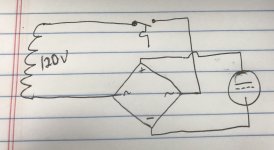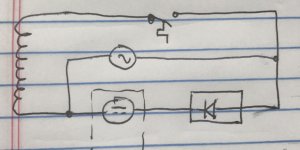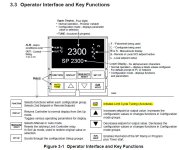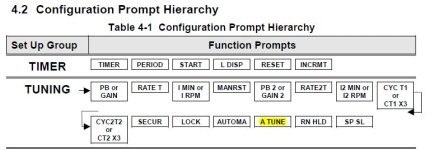I need help troubleshooting an oven controller unit. Once in a while (not always) temp increases steadily 20 degrees above SP causing the unit to shut down.
Here is the two of the main components.
-Honeywell UDC2300 temp controller. SP 170. HL at 190.
-AMF RP11DY0 (110VDC) This is a DC coil contactor.
The temperature reading does not bounce around nor does it react to me wiggling on the thermocouple or its wires. So, I don't think it's the thermocouple that is the problem.
Question 1) Can the rectified L1 and N, as shown in the picture, operate the 110V DC coil?
Question 2) I don't understand this part. When the controller output is ON, I read 110VAC across B and N, and the DC coil is energized. But when the controller output is OFF, I still read 110VAC across B and N, and the DC coil de-energized.
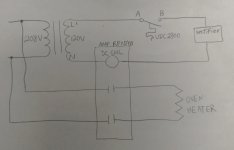
Here is the two of the main components.
-Honeywell UDC2300 temp controller. SP 170. HL at 190.
-AMF RP11DY0 (110VDC) This is a DC coil contactor.
The temperature reading does not bounce around nor does it react to me wiggling on the thermocouple or its wires. So, I don't think it's the thermocouple that is the problem.
Question 1) Can the rectified L1 and N, as shown in the picture, operate the 110V DC coil?
Question 2) I don't understand this part. When the controller output is ON, I read 110VAC across B and N, and the DC coil is energized. But when the controller output is OFF, I still read 110VAC across B and N, and the DC coil de-energized.





